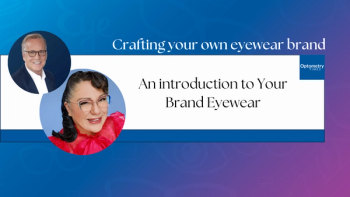
AAOpt 2023: Sunny with a chance of tears
Hear what is new in the world of ocular surface disease, and what's coming down the pipeline.
Pamela E Theriot, OD, FAAO, founder and director of the Dry Eye Center at Lusk Eye Specialists in Shreveport, Louisianna, sat down with Optometry Times®' editor Kassi Jackson to share highlights from her discussion, "Sunny with a chance of tears: What's in the forecast for ocular surface dryness therapies," which she copresented with Drs. Lisa Hornick, Tracy Doll, and Mila Ioussifova during the 2023 American Academy of Optometry meeting in New Orleans.
Editor's note: This transcript has been edited for clarity.
Kassi Jackson, Editor:
Hi everyone, I'm sitting down with Dr. Pamela Theriot, who's here to talk about, "Sunny with a chance of tears: What's in the forecast for ocular surface dryness therapies," which she is co-presenting at the American Academy of Optometry meeting this year in New Orleans. Welcome, Dr. Theriot.
Pamela E Theriot, OD, FAAO:
Thanks so much for having me, Kassi. I appreciate it.
Jackson:
We're happy to have you here. So can you tell us a bit about the presentation?
Theriot:
Well, we are doing a rapid fire talk about what is new in the world of ocular surface disease, and what's coming down the pipeline. So it's super exciting that we get to talk about a few of the newer drops that have just been FDA approved in the past couple of years.
Specifically, we'll be talking about therapies like varenicline, which is the only FDA-approved nasal spray that treats dry eye disease, And cenegermin, which has been on the block for a few years now, but getting more and more press as doctors are realizing that neurotrophic keratitis isn't as rare as we thought it was. We can find it in our chair on — in my clinic, a weekly basis, I see a lot of neurotrophic keratitis. So, we're gonna be going over those two therapies.
And then there are some new things that are coming. And particularly, I'm talking about lotilaner, which is, again, the only FDA-approved treatment for Demodex blepharitis. And I'll be talking BlepharoExfoliation procedure that you can do in the office; there's a new one that just came on the market in 2023, called "New LidsPro."
Jackson:
What are some of the key takeaway points that you want to make sure to highlight?
Theriot:
Well, I think that [it's] really important for optometrists to realize that we have so many more tools in our toolbox that we didn't have — even in the past five years, that we can prescribe these treatments and therapies to our patients and have them feel better. So no longer will we just say, "Oh, here, try these artificial tears, just keep trying a different over the counter remedy," when we have so many prescription medications in our toolbox that are really working and helping our patient.
So that is the key takeaway: go to the root cause of your patients' ocular surface symptoms, and there will be a treatment that's perfect for it.
Jackson:
Wonderful. And how can practice owners leverage this information to better run their clinics?
Theriot:
Well, I think that just realizing the breadth of variety of treatments that we do have now, getting to know a little bit more about these new treatments, and other practitioners around them are using them and with good results.
So I think just having the confidence of knowing that you can try newer therapies, then we'll talk about whatever side effects there might be to the therapies that you might want to warn your patients about, but really feeling more confident about prescribing something that is new to the market, because it is tried and true.
Jackson:
Yeah. And how will the confidence of these new therapies help improve patient care?
Theriot:
Well, absolutely, having patients have a more precise therapy that is going to go to the root cause of their symptoms is really what we're after in clinic—finding out what is causing the symptoms and then treating that specifically, rather than just covering up the symptoms. So we're hoping to help our patients more and more as the years go on, and we get more therapies.
Jackson:
What do you think the future of dry eye will look like?
Theriot:
Well, I think it'll be sunny with a chance of tears. But of course, there are a few more therapies that are in the FDA pipeline, as we speak. And so in the next year or two, there'll be several more options of ways to treat our patients who are suffering from ocular surface disease, and very excited about that.
Jackson:
Great. Dr. Theriot, thank you so much for your time today.
Theriot:
Thank you appreciate it.
Newsletter
Want more insights like this? Subscribe to Optometry Times and get clinical pearls and practice tips delivered straight to your inbox.



















































.png)


